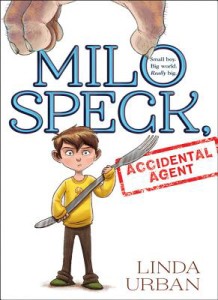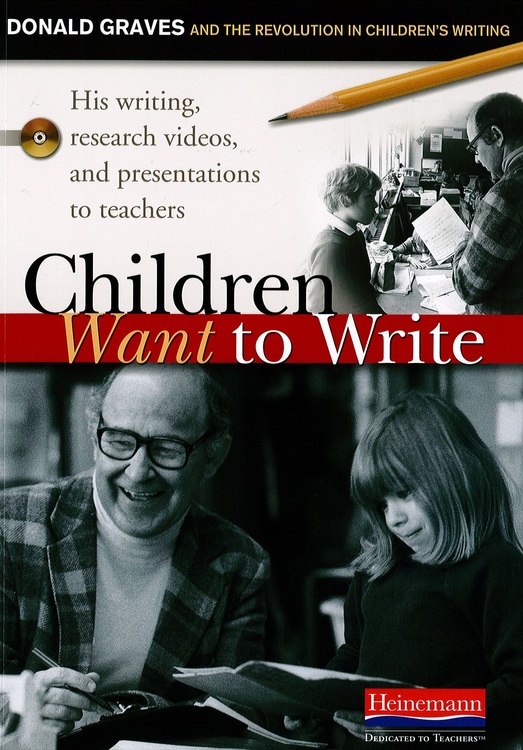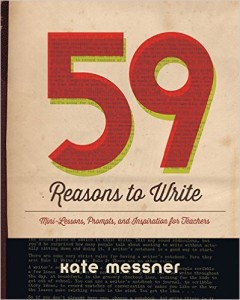This past Fall at the 2015 NCTE conference, I heard Linda Urban (and several other authors) speak with teacher, Melissa Guerrette about writing. It was fascinating! They also talked about MILO SPECK, and an interesting collaboration that developed between Linda and Melissa’s class.Today we share Part 3 of a 3-part post about Milo and that collaboration. (Part 1 can be found HERE, Part 2 is HERE.)
DIANNE: I’ve no doubt that your class’s collaboration with Linda will be one of the highlights of their elementary school years. But, as wonderful as it was, I’m sure there were logistical issues – district curriculum and other requirements – to deal with. Were there roadblocks you had to work around? Do you have any tips for other teachers who might be interested in doing a similar type of project with a children’s author in their own city or town?
MELISSA: I was really fortunate to have the professional trust of a supportive administrator who knew this connection was important to authentic learning for my students. But, I think your question shines a light on how critical it was that there was so much flexibility in our collaboration. It was advantageous that my goals for our partnership were broad and overarching rather than rigid and agenda-driven. I felt comfortable sharing what I perceived the student needs to be on the go and asking Linda to bring our needs–for example, moving writing from “telling” to “showing”–into the conversation with examples from her work. Our entire interaction was flexible and Linda easily adapted to or responded to what was relevant for the students. Of course, schedules often necessitated flexibility, too, with Linda’s writing deadlines and our school vacations and standardized testing schedules.
 The connections between Linda’s work and the students’ writing were more obvious while we were focused on a narrative writing unit (than say, informational research writing–though, they did want to know how much dryer research was involved in writing Milo), but really, the emphasis of our correspondence was not specific to types/structures or standards for writing. Because Linda and I took our lead from the students’ needs and interests, we often shared and discussed practices, like revision, feedback, inspiration, and resilience. And really, those parts of a writer’s life are transferable across all types and genres of writing, aren’t they?
The connections between Linda’s work and the students’ writing were more obvious while we were focused on a narrative writing unit (than say, informational research writing–though, they did want to know how much dryer research was involved in writing Milo), but really, the emphasis of our correspondence was not specific to types/structures or standards for writing. Because Linda and I took our lead from the students’ needs and interests, we often shared and discussed practices, like revision, feedback, inspiration, and resilience. And really, those parts of a writer’s life are transferable across all types and genres of writing, aren’t they?
I hope the example of our partnership does inspire other teachers (and authors!) to consider how we can work together to make our writing process more transparent for developing writers. And I know that we were especially lucky to benefit from Linda’s generosity and commitment. I guess these would be my three tips:
- Be resourceful. There are more and more professional writers who are sharing the “behind the scenes” of their writing on their blogs, in interviews, and in podcasts. These are ways the examples of a writerly life are more and more accessible.
- Be respectful. Be mindful that time spent connecting and corresponding with you and your students is time away from writing, even if interacting with the readership is informative to the process.
- Be open in your definition of who is a mentor writer. Kids marvel at the opportunity to connect with someone whose name is published on a book, but they can be equally engaged with the process of any writer. Even–and especially–YOU, the teacher. We are our students’ first and most accessible mentors.
DIANNE: Can you suggest one or two of your favorite books on writing/teaching writing?
 MELISSA: Keeping this to two is tough, but here are two that help shape my thinking.
MELISSA: Keeping this to two is tough, but here are two that help shape my thinking.
A book that was influential in prompting my reflection about writing instruction is Children Want to Write: Donald Graves and the Revolution in Children’s Writing, edited by Tom Newkirk and Penny Kittle. This professional resource is a compilation of writings from the great Don Graves, with additional commentary from Penny Kittle and Tom Newkirk, both of whom are writing instruction gurus themselves. We used this text as the basis of a book study at my school, and it anchored many thoughtful conversations about shifts we could make to a more student-centered writing classroom.
And, because we are more effective when we teach what we know, another resource I recommend widely is 59 Reasons to Write, by Kate Messner. The pages are filled with practical advice and writing prompts for teacher-writers who are getting started or looking to stretch as a writer. Kate draws on her own writing experience and that of other writers from the Teachers Write community to share quick writes, anecdotes, and question and answer examples from professional writers. I cannot emphasize enough the benefit of dabbling in writing as a teacher. My writing instruction has been influenced as much by my own writing practice as it has by interactions with other writers. A teacher who writes becomes an insightful teacher of writing.
DIANNE: Thanks so much, Melissa. It’s been extremely informative. I’ve added both of your book recommendations to my “wish list!” Like you, I found that “dabbling in writing as a teacher” was one of the most important ways to influence the way I understood the writing process and taught it to kids. I hope teachers will take advantage of all the wisdom you’ve shared here. Thanks, again!










